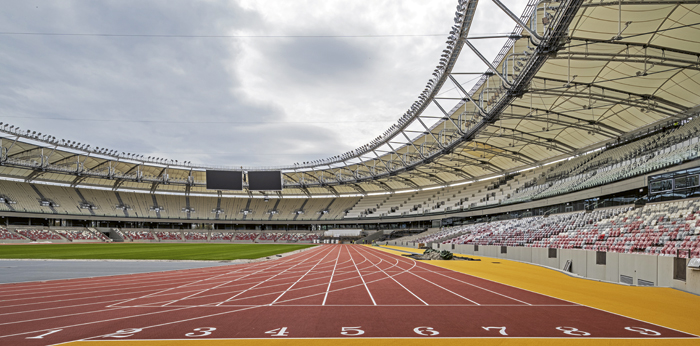Track and field events require certified surfaces and must orient themselves to further guidelines that also affect the stadium infrastructure. A current push will open up the existing indoor facilities for creative as well as cost-effective formats.
The World Athletics federation (in short: World Athletics) formulates a specific catalogue of requirements for the infrastructure of all competition classes. In athletics, with its many disciplines and extensive mobile and stationary sports equipment, an almost unmanageable wealth of details is described. And the higher the level of competition, the higher the demands on the precision of markings and fixtures. At the same time, the competition facilities of international championships and meetings are larger, and warm-up facilities must also be available here. To achieve worldwide infrastructural consistency and thus ensure fair competition in which fractions of a second correspond to the same distances on all lanes, WA issues certificates above and beyond the national federation guidelines and construction standards.
For the top level, the certifications Class 1 and Class 2 apply for outdoor facilities and, of course, a separate certificate for indoor events. A Class 1 facility not only has the full infrastructure for all sports – some areas are also duplicated. WA describes all this in detail in the “Track and Field Facilities Manual”. The first part contains all the information on the infrastructure of a facility. It describes the use of the facility, the typologies according to the number of lanes, the arrangement of disciplines and warm-up areas, lengths, radii, markings, irrigation and drainage, et cetera, as well as the basic construction aspects to be considered in the infrastructure for each individual discipline, and of course the surfaces for athletics running tracks in all their variations.

World Championships 2023: 9 lanes in the Budapest stadium.
Image: Gyorgy Palko
The full article with all the data can be found in the new SPORTS VENUES 2023/24. Click here to go directly to the story. Also in the yearbook: the construction report for various other countries and continents, portraits of internationally relevant stadiums and arenas, the Tech Report on the most important trends and topics in the industry as well as a variety of interviews and much more.